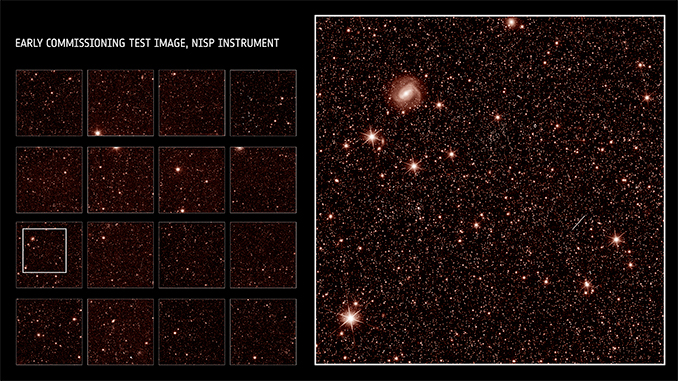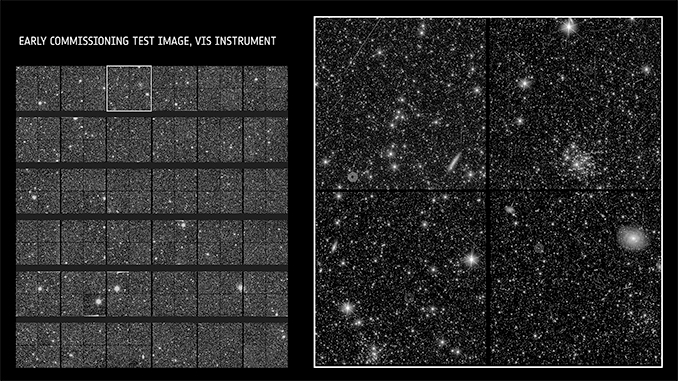The Euclid space telescope from the European Space Agency, launched on 1 July via a SpaceX Falcon 9 rocket, has arrived at its operational position at Lagrange Point 2, a stable gravitational area 1.5 million kilometers (1 million miles) away from Earth.
Initial test images reveal that the spacecraft's VISual imager (VIS) and Near-infrared Imaging Spectrometer and Photometer (NISP) are functioning well, capturing clear, wide-angle views of numerous stars and galaxies. Though raw images display cosmic ray streaks, these artifacts will be eliminated during the processing of scientific images.
Giuseppe Racca, the project manager, expressed, “After over 11 years of Euclid's design and development, it is both thrilling and deeply emotional to witness these initial images. It's truly remarkable to see just a few galaxies here, captured with minimal system adjustments. Once fully calibrated, Euclid will survey billions of galaxies to construct the most extensive 3D map of the sky ever created.”

Yannick Mellier, the head of the multi-agency Euclid research consortium, stated, “The remarkable initial images captured by Euclid's visible and near-infrared instruments herald a new era in observational cosmology and statistical astronomy. They signify the commencement of the exploration into the true essence of dark energy, a pursuit led by the Euclid Consortium.”
The $1.5 billion Euclid project represents a pioneering effort to elucidate the characteristics of dark matter, the enigmatic substance permeating the universe, and dark energy, the inexplicable repulsive force propelling the universe's expansion.
Through the analysis of subtle luminosity variations in galaxies spanning the last 10 billion years, Euclid's cameras will aid researchers in determining whether dark energy aligns with a static "cosmological constant" as foreseen by Einstein's theory of general relativity, or if the current understanding of gravity necessitates revision.
Euclid will also delve into the nature of dark matter by scrutinizing the configurations of approximately 1.5 billion galaxies to ascertain how they have been distorted by concealed clouds of dark matter scattered across the expanse between Euclid and its targets.
ESA Director General Josef Aschbacher remarked, “It is truly impressive to witness the rapid success of the latest addition to ESA's scientific missions. I am fully confident that the mission's team will utilize Euclid effectively to unveil substantial insights about the 95 percent of the Universe that remains largely unknown to us.”

No comments:
Post a Comment